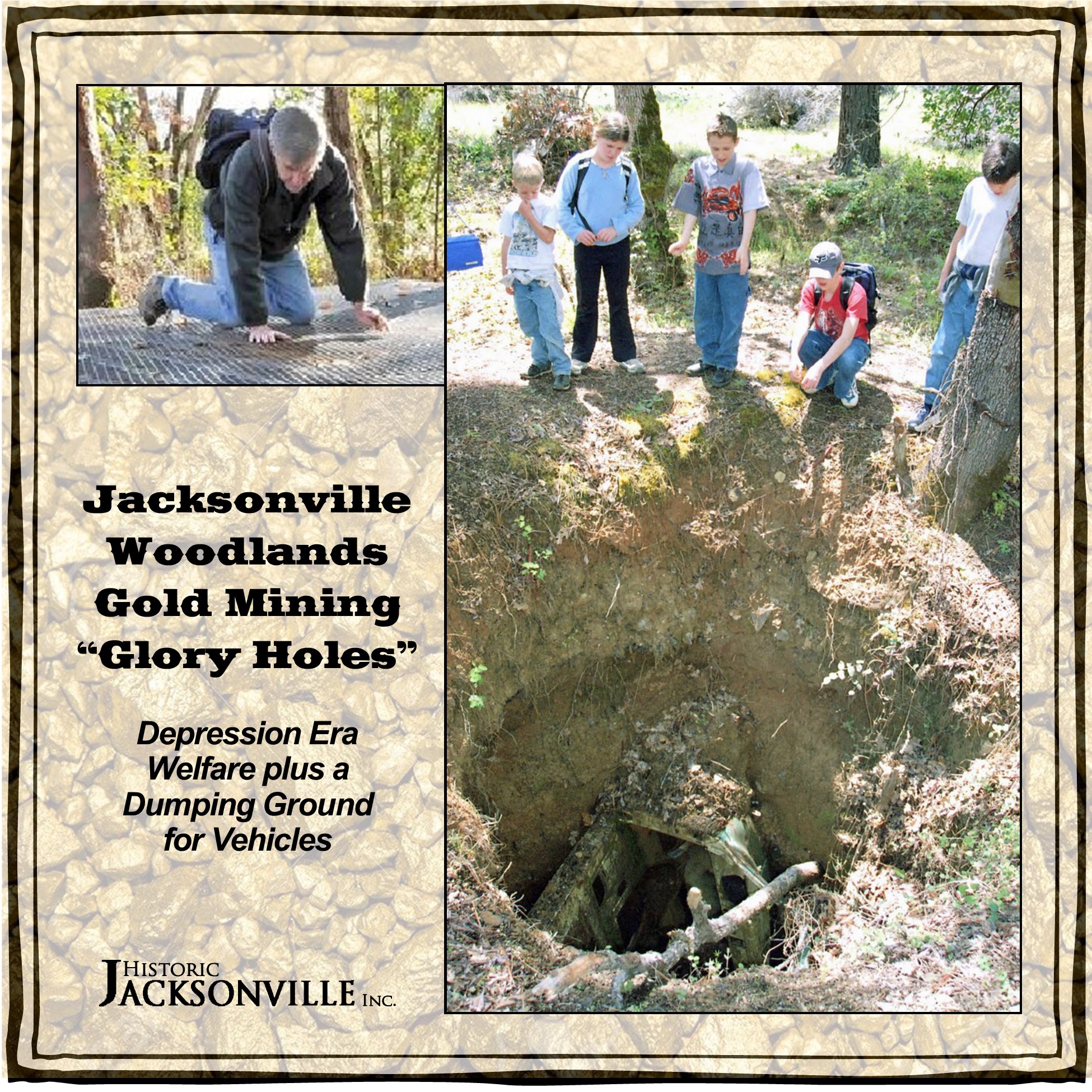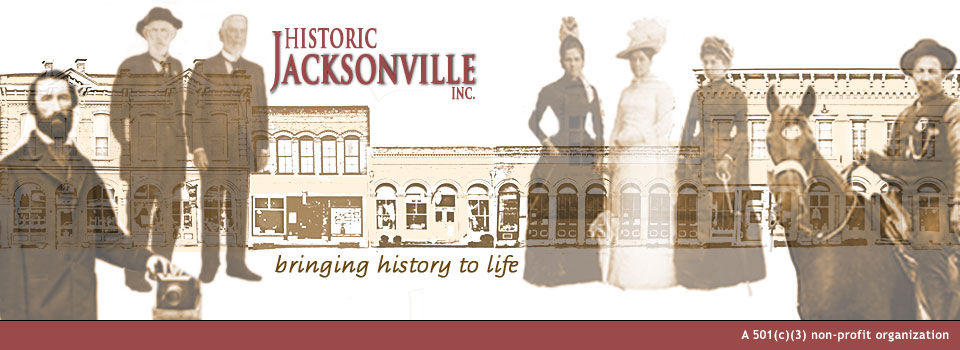
March 16, 2021
On several of Jacksonville’s Woodlands Trails, hikers see deep mining shafts called “Glory Holes,” remnants of 1930s Depression Era mining. They were named “Glory Holes” because they were get-rich-quick attempts at gold prospecting. For most, these typically 10- to 20-foot-deep holes held little glory.
One of these shafts at the junction of the Rich Gulch and Petard trails is particularly well known—at the bottom is a 1950s GMC pickup truck. A former owner of the Rich Gulch property reported 7 vehicles buried in various shafts. Most were dragged and dumped during the last half of the 1900s as a way of getting rid of them. It’s thought the truck was dropped into this 35-plus foot shaft to hold up the sides. Most of the holes have since been filled in. This particular shaft was designated as an “antiquity” under Rich Gulch’s National Historic Landmark status and has since been covered by a see-through metal lid for safety purposes.
Jacksonville’s original gold rush began in the spring of 1852, but during the 1930s Depression, Jackson County issued mining permits as an alternative to putting people on the “dole” (i.e., welfare). A miner could eke out enough residual gold to live on, perhaps $2 a day—double local wages. A few found actual riches. As a result, most of the town itself was undermined, with the exception of a portion of North 5th Street that included New City Hall (the historic Jackson County Courthouse) and St. Andrews Methodist-Episcopal Church. The City of Jacksonville refused to permit it.
